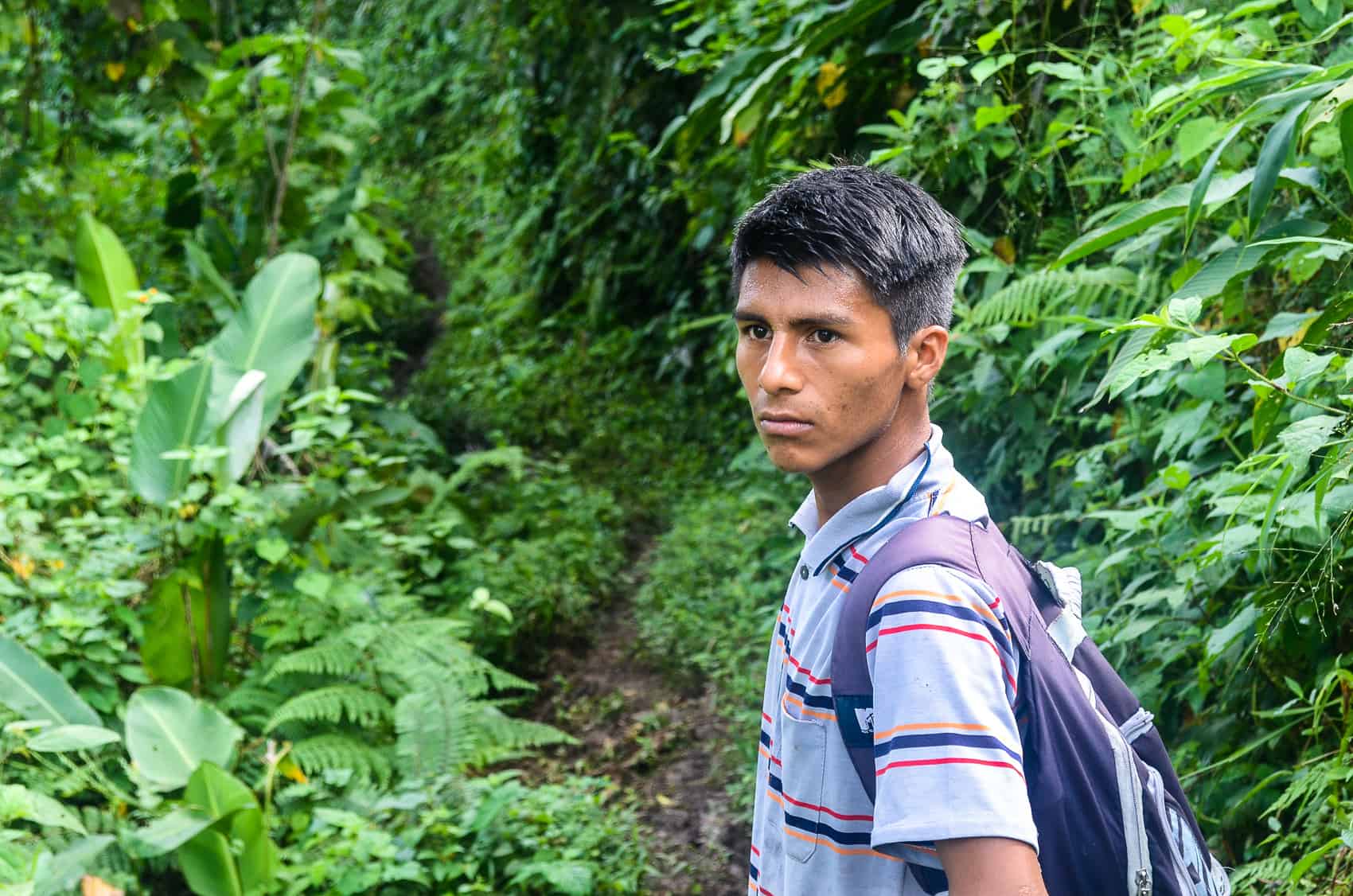When unidentified helicopters appeared last year over Costa Rica’s heavily forested southern Caribbean region of Talamanca, residents of the Bribrí indigenous community mobilized. On at least three occasions, the Bribrí reported strange helicopters hovering over their land, including one instance when people on board claimed to be missionaries, despite carrying guns, locals alleged.
The sightings along the Caribbean were likely connected to a series of dramatic raids in Limón and the Northern Zone that uncovered a network of improvised helipads and suspected drug camps where assault rifles and precursor chemicals for synthesizing cocaine were discovered last fall.
The indigenous community’s vigilance was highlighted in findings presented Tuesday in San José that argued that well-defined indigenous land rights could be a nonmilitary option to combat the encroachment of drug trafficking and its negative environmental and social impacts on forest communities in Mexico and Central America.
State recognition of community land rights are a critical foundation for the organizational capacity, social cohesion and sustainable economic alternatives that fortify remote communities from incursion by organized crime, the report’s authors argued.
The study from the Salvadoran Research Program on Development and Environment (PRISMA) followed a January article in the publication Science by Dr. Kendra McSweeney, an associate professor at Ohio State University who co-authored the findings, that observed a strong correlation between accelerated rates of deforestation and heavily treaded drug trafficking routes in Central America.
Since 2006, Mexican drug-trafficking cartels have turned the isthmus into a major transit point for cocaine and other drugs as authorities increased patrols along sea routes to the United States, which pushed traffickers inland. An estimated 86 percent of the cocaine that travels to the United States passes through Central America, according to the U.S. State Department’s 2014 International Narcotics Control Strategy Report.
“Indigenous communities are very effective [at defending forests from drug traffickers] when governments support the rights of indigenous peoples and forest communities,” Andrew Davis, senior researcher with PRISMA and co-author of the findings, told The Tico Times.
Davis said that his group’s research showed that forests managed by indigenous communities or other forest dwellers showed much lower rates of narco-related deforestation than strict conservation areas. Organized crime groups often clear-cut protected forests for informal landing strips or launder illicit profits from the drug trade with legitimate cattle or large-scale agriculture, like palm oil plantations, that require removing forests.
Indigenous-controlled forests often require outsiders to have the permission of a local chief or elected leader, and community members have mechanisms in place to report the whereabouts of strangers on their land, McSweeney said. Patrols by these groups using radios and other technology can be key sources of information for authorities to locate and evict drug traffickers.
“When you live in a forest, that forest isn’t just a national park to you. It’s your pharmacy, it’s your hardware store, your production plant. It’s where jobs come from; [it’s] the foundation for your economic livelihood,” Davis said, noting that often times park rangers in the region are assigned thousands of hectares of dense jungle without the means to survey it.
An alternative to military action
Davis noted that there would likely always be a role for police or military action regarding the expulsion of drug traffickers from protected forests, but he said he hoped the findings would contribute to exploring nonmilitary responses to the conflict.
“In Honduras, the military approach has alienated native communities, and [the military has] not worked with them to fight the problem,” McSweeney said. “I’m convinced it would have been much more successful if the [U.S. Drug Enforcement Administration] and Honduran counterparts had worked more closely with communities rather than against them.”
“Let native communities do what they do best, which is patrol and monitor, manage their territory, and when they need help they should be able to call on a responsive military to assist,” McSweeney added.
“The [state] shouldn’t be bringing more arms into our community, they should be reinforcing our communities with social investment” like education and health care, said Cándido Menzúa, elected leader of the Emberá Wounaan people of Panama.
The search for economic alternatives
“The question that worries us more than security is how to generate alternatives that keep our young people from falling into drugs. This is where forest management becomes a very positive alternative for our community’s development,” Menzúa told The Tico Times.
Many of the communities highlighted in the report practice forms of sustainable logging or agriculture in the forests. But to do that, the state must relinquish some control over these protected lands.
Unlike many of the forest dwellers named in the report, Costa Rica’s Bribrí and other indigenous groups do not have autonomy. Pressures over disputed land rights came to a head in 2012 in the southern town of Buenos Aires, when locals and forest communities clashed violently.
“There has been a lot of reticence to hand over these lands to communities because of traditional biases and conceptions that they will not be stewards of the land. But what has happened in the past 20 or 30 years is that where we have seen major areas recognized, indigenous territories and other communities, we have found that [they can thrive] as long as their rights are recognized and their economic and social models are supported,” Davis said.
The authors observed that drug trafficking and deforestation are most present in areas where land and resource rights are unclear and poverty is rampant.
“States need to get rid of the red tape so that community models can thrive,” the PRISMA researcher said.
Researchers and community leaders hope that greater recognition of indigenous land rights and locally managed woodlands will contribute to nonmilitary alternatives to deter the expansion of drug traffickers and their damage to Central America’s remaining forests.






